The best robot vacuums let you put your feet up while you outsource the chore of cleaning your floors. With suction power that can rival even the best vacuum cleaners, it’s no wonder the best robot vacuums are becoming increasingly popular.
The best robot vacuums connect to your phone so that you can control them without even leaving your seat. They also use powerful lasers to ensure the machine doesn’t bump into your furniture or fall down any stairs. Some robot vacuums even have built-in water tanks so they can also mop your floors after they’ve vacuumed, too.
With so many options on the market, it’s a good idea to start by taking a look at the battery run time each robot vacuum offers. Take note of whether the vacuum has smart mapping which effectively means it gets to know your home and can create customized cleaning schedules for you, and for ultimate convenience, some of the options we’ve tested even empty their own dust cups.
We’ve tested a range of models to bring you a selection of the very best robot vacuum cleaners for pet hair, hard floors, and even options that do a great job of carpets too. Thankfully there’s a model to suit every budget so to find the best robot vacuum for you, just keep reading.
If you can hold off until Amazon Prime Day 2021, which is happening in a couple of weeks, there are likely to be some substantial savings on many of the robot vacuum cleaners on this list, many of which are likely to be matched by other retailers, too.
Amazon has a track record of discounting even recently-released robot vacuum cleaners by hefty amounts. If you’re looking for top-of-the-range robot vacuums, then it’s also worth waiting as they are likely to be cheaper on Prime Day than any other time of year.
- Don’t miss the best cordless vacuum cleaners
- Here’s how often you should vacuum
- Find out how to clean a carpet without a machine
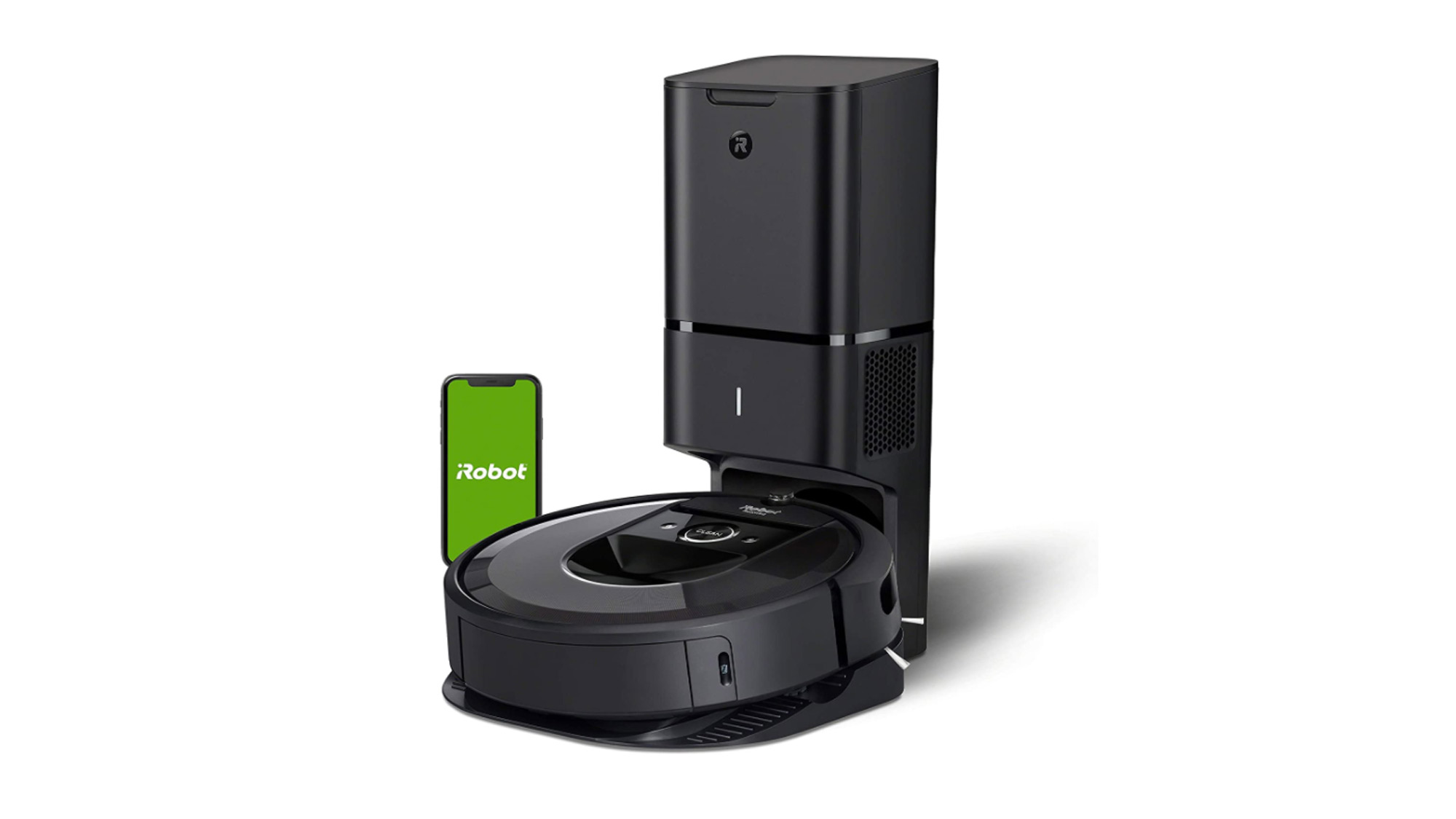
The Roomba i7+ was always going to be an impressive cleaning machine, as it boasts the same smarts to keep from crashing into objects and environment mapping so it quickly learns every nook and cranny of your home, just like the iRobot Roomba 980. However, integration with Amazon Alexa and Google Assistant along with the ability to store maps of every room in your home in a secure area online speeding up cleaning time, means it’s been elevated to another level.
The jewel in the crown for us is the robot vacuum’s ability to automatically empty its dust bin. When it docks, the debris in the dust bin is immediately sucked up and stored in a disposable bag which makes up part of the dock. These bags hold around 30 days worth of dust. You’ll get an alert on the app when it needs replacing, but at $14.99 / £21.95 / AU$59 for three bags, this creates an ongoing cost for the robot vacuum.
It retains the familiar circular design and rotating body found on previous Roomba robot vacuums, so it has no problems manoeuvring through narrow areas. We were impressed at its dust pick-up both on floorboards, tiles and other hard surfaces, as well as carpet. This is, in part, thanks to the rubber rollers. As well as being two rollers rather than just one, they have more refined grooves which further improves the dust pick up.
Read our full review: iRobot Roomba i7+
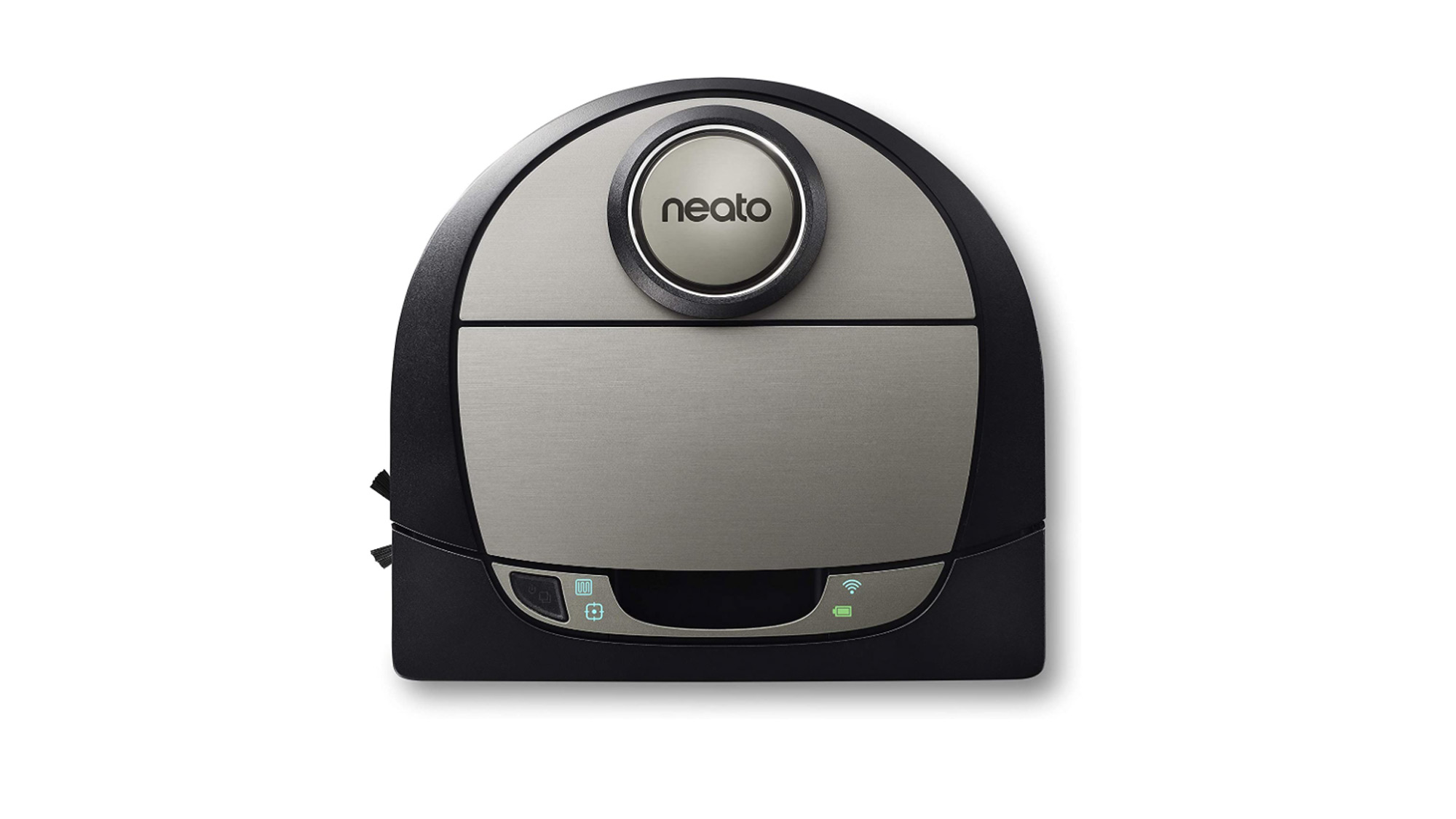
The Neato Botvac D7 Connected is a robot vacuum to rival the Roomba i7+, and we mean that. It's a good looking vacuum that more than gets the job done, but its laurels don't rest there.
The revelatory feature with the Neato Botvac D7 Connected are so-called 'no-go lines', which allow you to cordon off areas of your home that you don't want the vacuum to venture into. This could be your desk, which is moated by wires that would normally spell treachery for a robotic vacuum.
Creating a boundary for robot vacuums isn't unique to the Botvac D7, but it's really nifty in this application because you can draw a line using the app while the vacuum is in use to, say, keep the D7 from venturing into a room you want it to stay out of.
The biggest draw back with the D7 is that its bin isn't as big as the original Botvac Connected, and it doesn't have a 'bin full' sensor, so it ends up overfilling.
Read our full review: Neato Botvac D7 Connected
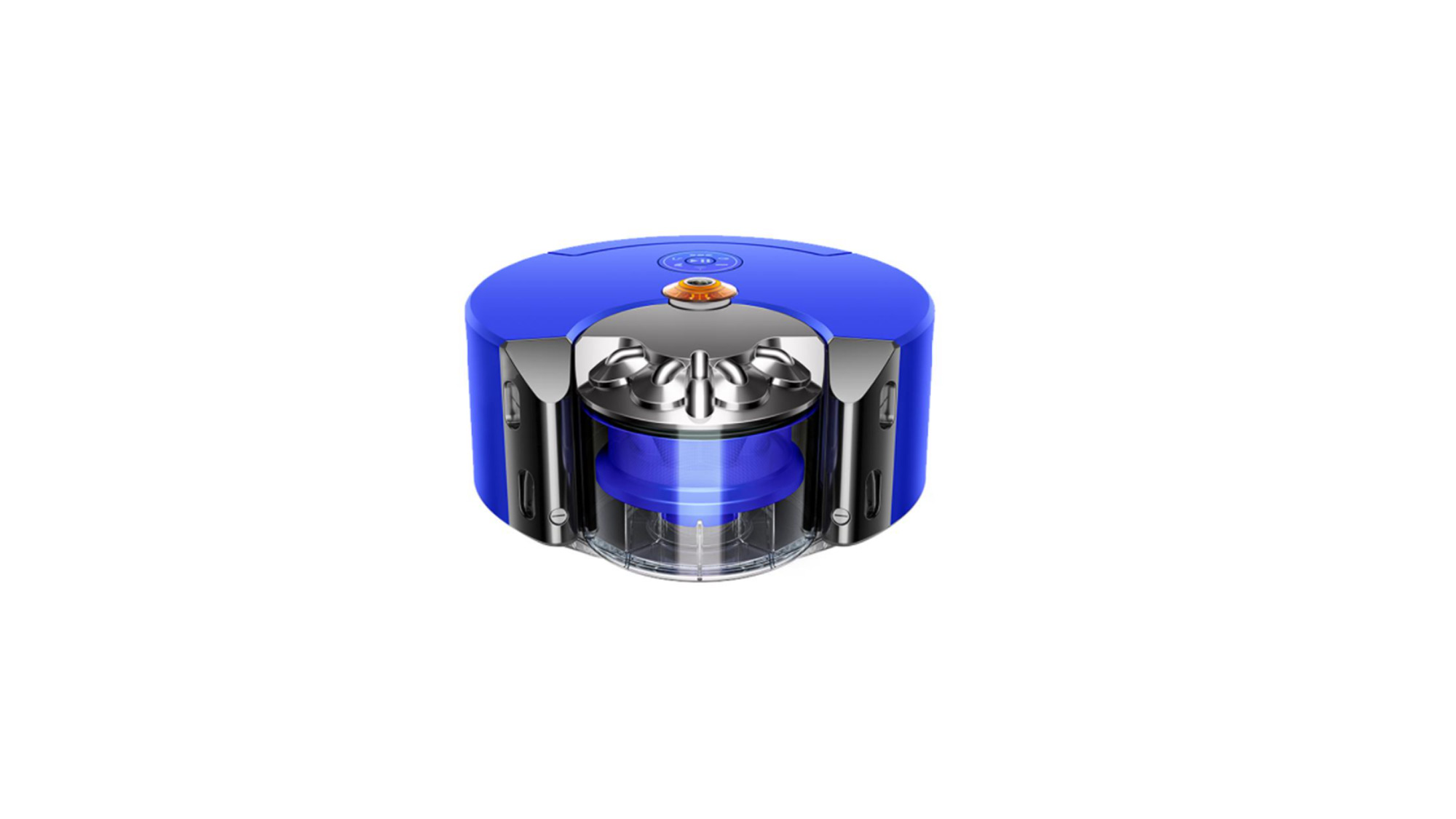
The Dyson 360 Heurist is the first robot vacuum that can really rival a cordless vacuum when it comes to cleaning power. It’s got 20% more suction than Dyson’s previous robot vacuum cleaner, the Dyson 360, and as the motorised brush runs the entire width of the vacuum cleaner, you get full suction power even on the edges of rooms. It’s a narrower design than most robot vacuums, but the trade-off is, its taller too. So while it does a great job at squeezing in narrow gaps, it struggles to get under some furniture.
There’s no denying it’s slow to set-up, as the vacuum uses a camera to map rooms rather than LiDAR but your patience will pay off. Once that’s completed, you’ll be able to split your house into zones and set restrictions such as avoiding altogether, not using the spinning brush bar (good for delicate hard floors and deep pile carpets) and stopping the vacuum from attempting to climb furniture.
It works with both Alexa and Google Assistant, so you can use your voice to start it cleaning. However, it can’t avoid obstacles, such as cables and shoes; so you’ll need to pick these up yourself and on full power, it’s louder than most of its competitors, coming in at around 70db.
Read our full review: Dyson 360 Heurist
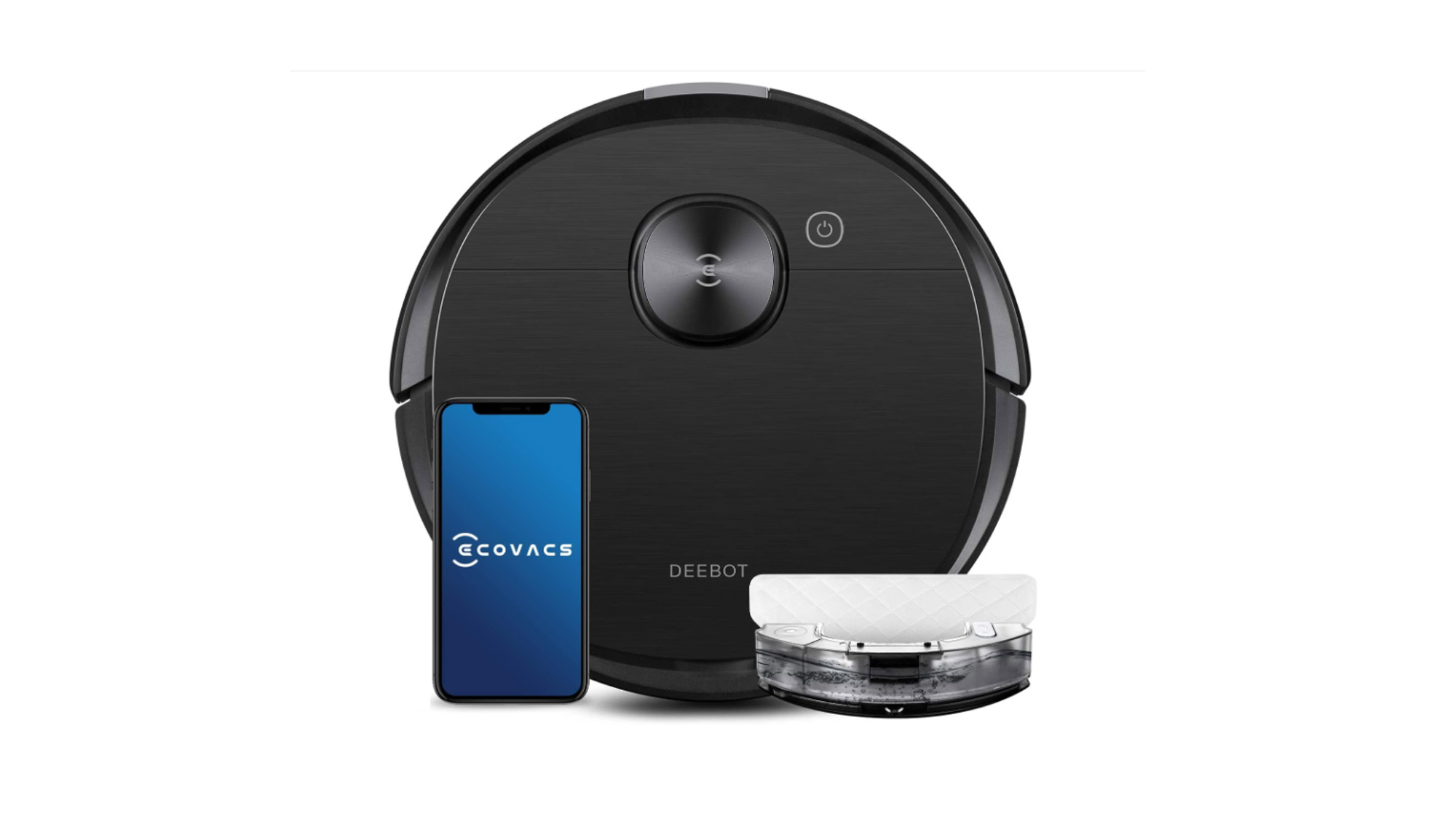
Where the Ecovacs Deebot Ozmo T8 AIVI stands out from the rest of the best robot vacuum cleaners competition is in its ability to mop your floors.
Sure, you won't get an elbow-grease effort out of the robot vacuum cleaner as it slushes water over your linoleum, but it can whisk away footprints and other surface-level stains in a snap. Although, you’ll need to remove the mopping plate when you want it to vacuum carpets.
It’s got a built-in camera designed to help it ‘see’ (and avoid) small objects, like cables, socks or toys - although they can still be sucked up by the vacuum, so ideally pick them up first. When the vacuum isn’t cleaning, you can get it to act as a security guard for your home, letting you see and speak to anyone in the house through the app.
We were impressed by it’s battery life, too. Ecovas claims it’ll last up to three hours, and we found there was still some juice left to spare after it had made its way round an average-sized two-bedroom apartment on the highest suction level.
While we found the dust pick up on hard floors and carpets was good, it tended to misse corners and edges. The mopping function was pretty woeful, too. There’s no scrubbing action, either so it struggles to remove spills and stains.
Read our full review: Ecovacs Deebot Ozmo T8 AIVI
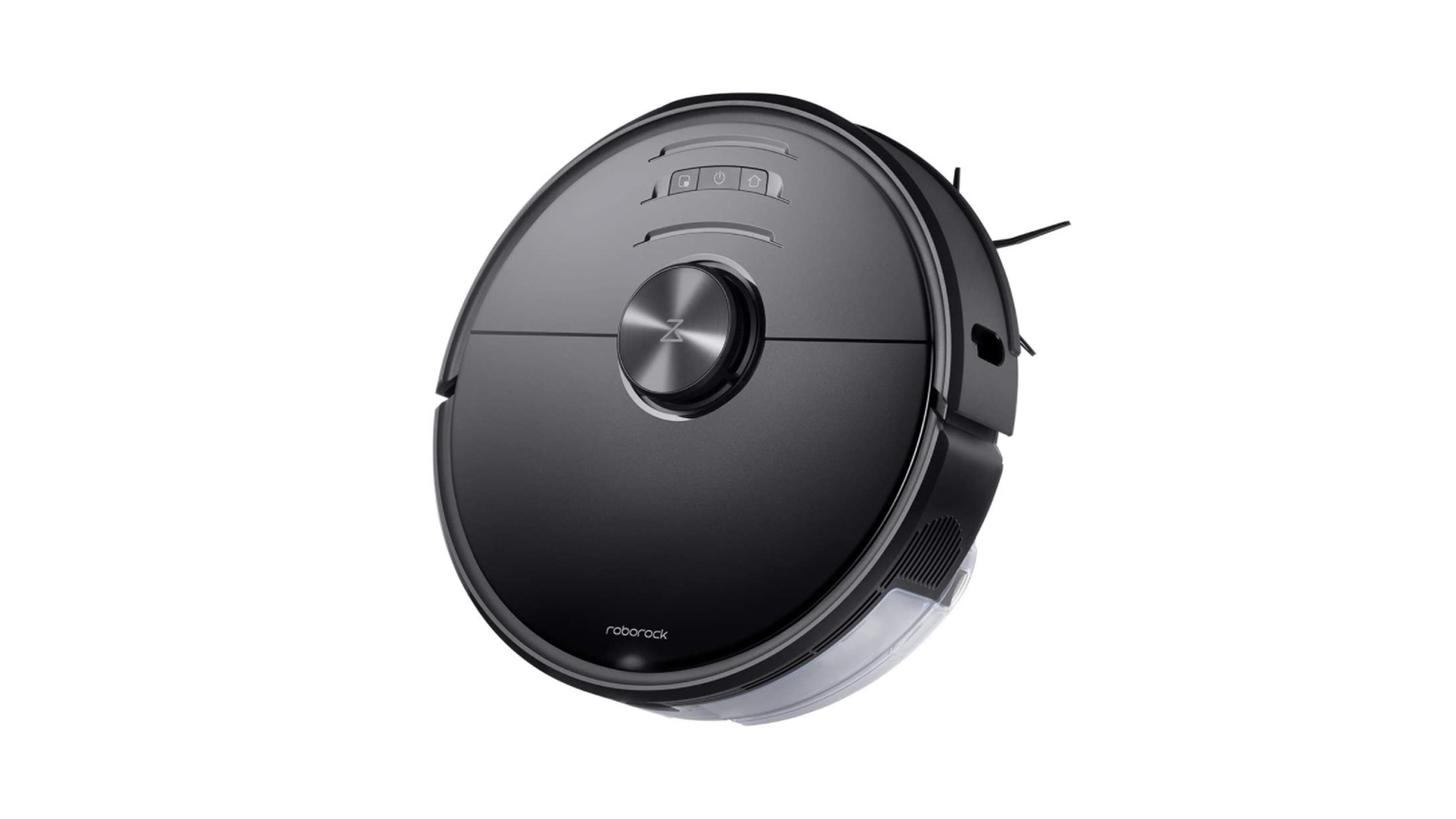
The Roborock S6 MaxV stands out for battery life. Roborock says it will manage up to three hours of continuous cleaning in its least powerful mode. During testing, we used the middle-of-the-road ‘balanced mode’ which meant 30 minutes cleaning over an area of 20 square meters (215 square feet) depleted the battery by 20% - a decent level of performance.
The Roborock S6 MaxV has dual cameras and a LiDAR, so it’s quick when it comes to mapping a room, it’ll even mark obstacles like discarded shoes or furniture on the map, and snap a photo which can be seen in the app. The app even uses AI processing to identify the obstacle, which works most of the time.
We were impressed with its dust pick up on carpets and hard floors - offering similar suction to its competitors. It can mop as well as vacuum, too but its dual function means it’s one of the biggest robot vacuums we’ve tested. At 19.2 x 16 x 6.1in (48.8 x 40.6 x 15.6cm) it takes up a significant amount of space and did struggle to get between chair legs. However, it’s surprisingly quiet in use, making it more of a gentle giant.
Read our full review: Roborock S6 MaxV
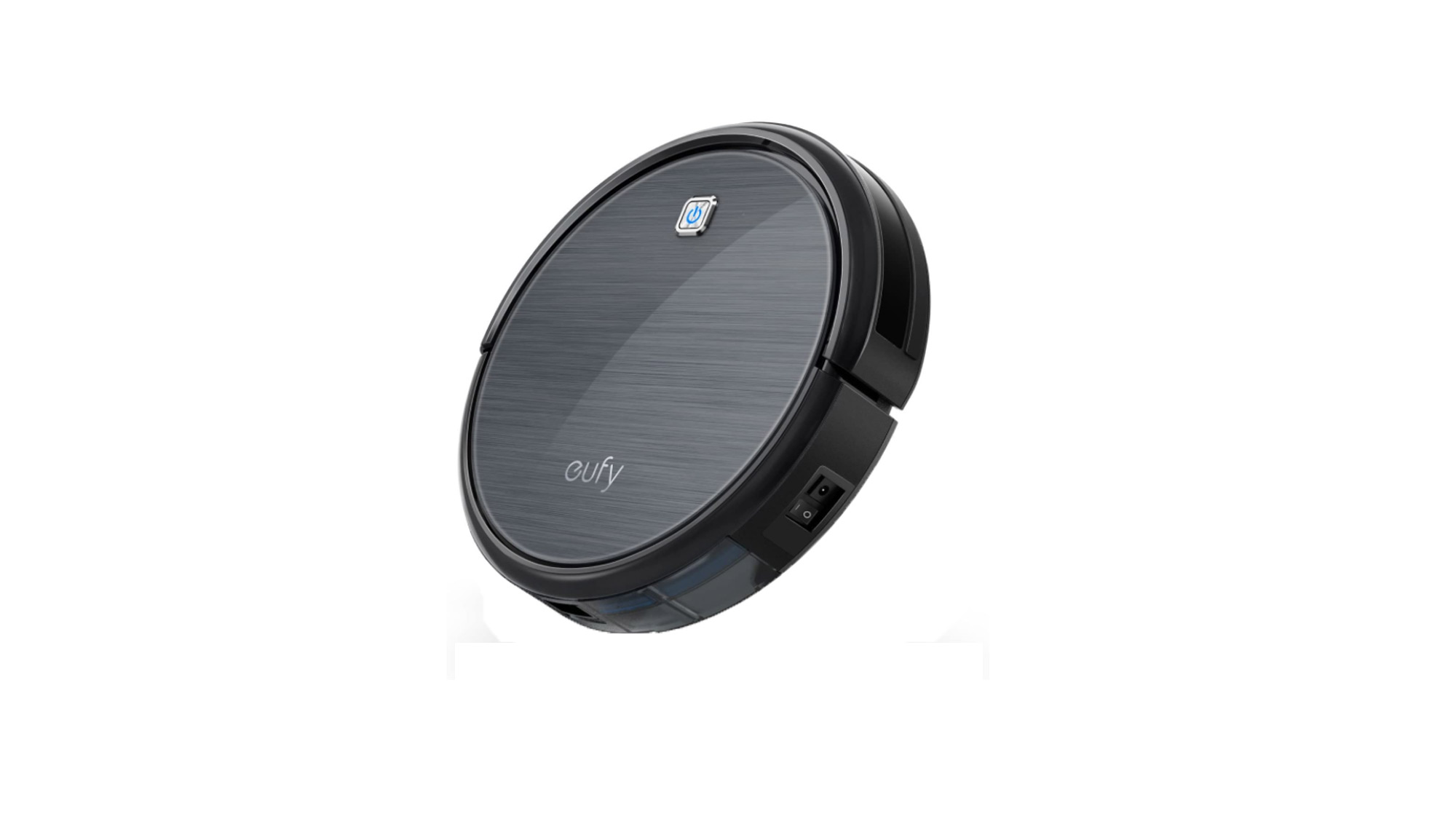
The Eufy RoboVac 11 isn't the most tech'd out or high-end robot vacuum, but it isn't afraid to get down and dirty and get the cleaning job done.
The best part about the RoboVac 11 is that it's cheaper than most robot vacuum cleaners on the market, so you can get the convenience of a vacuum that works on its own at a fraction of the cost.
Unfortunately, that low price means you miss out on things like a companion app, so you have to use a remote instead, and overall the RoboVac 11 is more... manual than we would have liked. The more recent RoboVac 30C fills in these gaps with an app and smart assistant capability, but there's still something to be said for the bargain vacuuming on offer here.
What's more, battery life leaves something to be desired, though while it's not as long-lasting as higher-end models, it's probably plenty of juice to satisfy your cleaning needs.
Read our full review: Eufy RoboVac 11
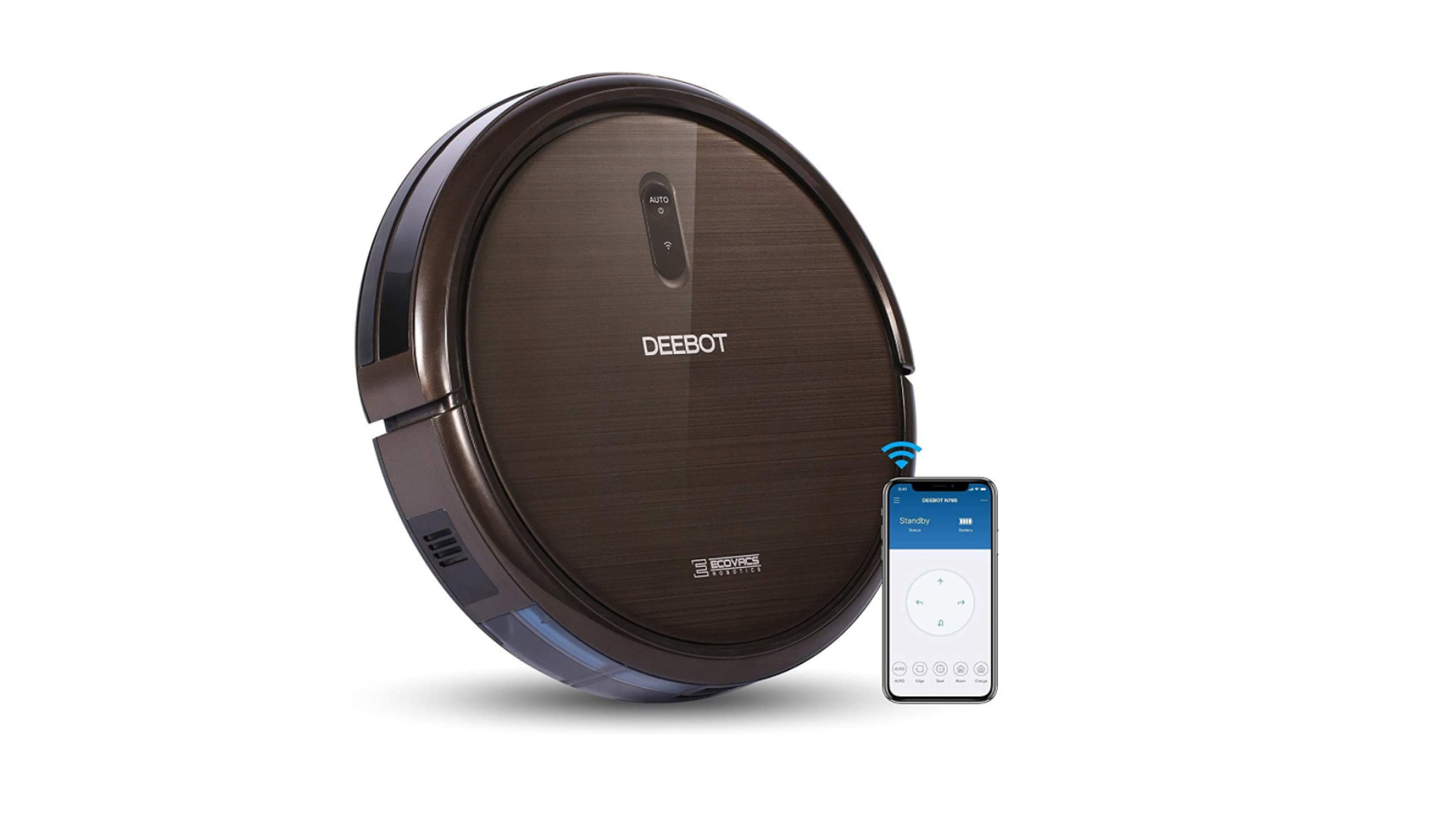
Not all robot vacuums are shiny, whirring pucks from the future. Some, like the Ecovacs Deebot N79S, are more subdued. This isn't an ugly vacuum by any means, but possibly one that's a bit on the plain side. Still, it's really about how it cleans that matters, not how it looks.
You have several modes to choose from with the Deebot N79S, and it comes with a remote that it's quite responsive to. Yes, you can use your smartphone to control the N79S, but the vacuum seems to prefer using the paired remote.
In our tests, we were impressed with the Deebot N79S' ability to not plunge to an early end at the bottom of our steep stairs, so its world-sensing abilities are up to snuff. It did tend to get stuck under furniture, however, so you may come home to find your Deebot wedged under a coffee table, unable to get itself free.
Don't expect a deep clean with this robot vacuum, but it will suck up enough to get surface dirt and dust off of your hardwood floors and carpet. Nicely, the Deebot N79S is rather quiet, making night vacuuming possible.
It's also compatible with Alexa, so you can set the Deebot N79S robot vacuum cleaning using just your voice.
Read our full review: Ecovacs Deebot N79S Robotic Vacuum Cleaner
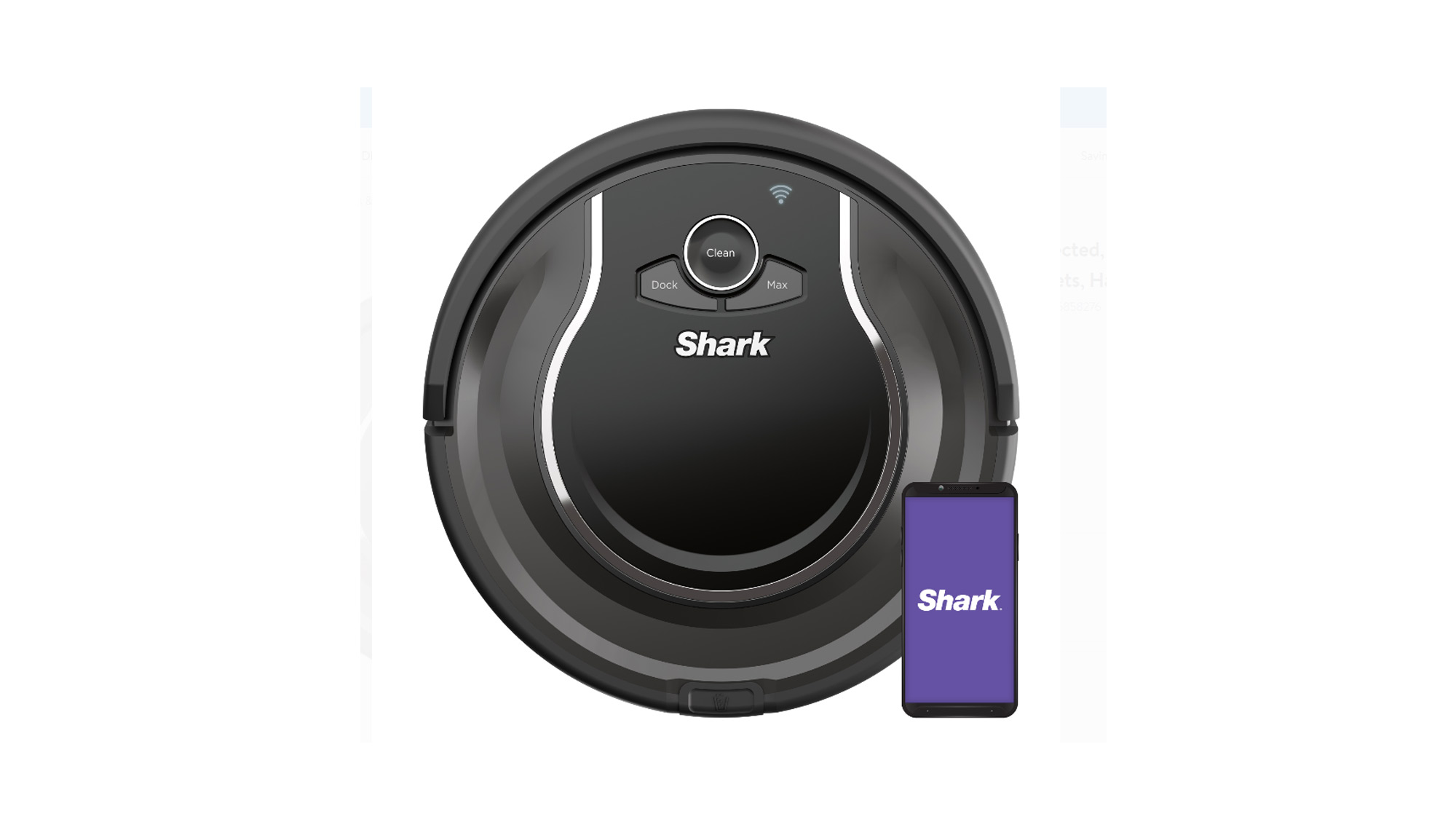
We've been testing the Shark ION Robot 750 for some time now and it continues to impress us with its strong suction and mapping smarts. Just when we think the 'bot is going to bump into something, it quickly pivots and carries on its way.
This robot vacuum cleaner works well on both our hardwood floors and thinner area rugs, though it struggles to crest above thicker rugs in our home. What it does get over, it cleans very well – we swear there's a sheen to our floors after the Shark ION gets done with them.
It's also on the quieter end of the best robot vacuums we've tested, and its whir often fades into the background while we're doing chores elsewhere in the house.
We wish the bin was a bit bigger as it can only go about 12 minutes before needing to be emptied (we do have dogs, though, which makes for a lot of dirt and debris). The bin may be just fine if you don't have as dirty floors as we do.
Not only does it perform well, but it looks great, too. The Shark ION Robot 750 is a statement piece, which we never thought we would say about a vacuum cleaner.
Read more: Should I buy the Shark ION Robot 750 Wi-Fi robot vacuum?
- Don't miss today's cheap robot vacuum deals
Is it worth buying a robot vacuum?
In short, yes. Robot vacuums can be more expensive than an upright or cordless vacuum but you’re paying for the added convenience of not having to do the vacuuming yourself. Robot vacuums are a great solution for busy people who simply don’t have time to put the vacuum around but they also offer a good alternative for those with mobility issues because all you need to do is switch them on.
Many robot vacuums cope well with both hardwood floors and carpeted areas but if your home has lots of staircases then, you’ll need an additional vacuum to clean the stairs. With many robot vacuums suitable for programing from your phone, you’ll be able to switch these devices on when you’re out and about and come home to clean floors.
Can a robot vacuum replace a normal vacuum?
Robot vacuums can offer a very impressive clean, even on thick carpets which makes them a good alternative to an upright or other types of vacuums. They’ll be more convenient too as you can set them to work when you’re busy doing other things. The dust cups on robot vacuums are often smaller than you’d expect to find on a canister or an upright vacuum cleaner.
While robot vacuums don’t have crevice tools that work well down the side of your sofa or on your stairs, these machines do normally have small brushes on the outside of their shells. The brushes do a good job of getting close to baseboards and making sure that any crumbs or dirt on hard floors doesn’t escape the vacuum’s suction.
Which robot vacuum should I buy?
We’ve included a range of robot vacuums above and have crowned the iRobot as the best robot vacuum on the market, however, the right option for you will depend on what you’re looking for.
If you’ve got pets at home, you might want to consider a robot vacuum for pet hair or one that can even empty its own dust cup so you don’t have to worry about that. Alternatively, if you need a robot vacuum to whizz around when you’re busy, and you already have an upright or a cordless vacuum to tackle deep cleaning, your best bet might be an affordable Eufy robot vacuum as these are often cheaper than the premium models.
Whatever you’re looking for, consider the battery run-time, the bin capacity, and any smart features that are included with each model.
How do robot vacuums work?
Robot vacuums have a series of brushes on the underside of the machine that work together to collect dirt and dust that they come in contact with. The dirt is then sucked up into the dust cup, which is fitted in the body of the vacuum. Most are fitted with smaller brushes that extend past the circumference of the vacuum and the purpose of these is to reach dirt that’s settled against baseboards or in awkward places.
More advanced robot vacuums have lasers on the front of the machine and some on the underside of the machine too. These lasers detect where furniture, objects, and edges are in your home helping to avoid bumps and cliff detection prevents the machine from falling down the stairs.
The dirt and dust that the robot sucks up will go through a filter and be collected in a dust cup, which you’ll be able to remove and empty when it’s full.
from TechRadar - All the latest technology news https://ift.tt/37d9FvY


